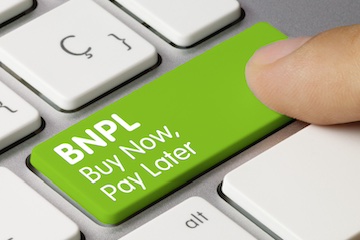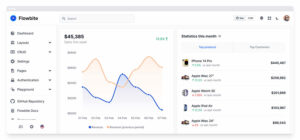
Fierce buy-now pay-later competition among payment card brands and independent providers is expanding conversion opportunities for merchants. By layering additional services onto existing rails, Visa, Mastercard, Discover, and American Express became global technology platforms. Similarly, independent BNPL providers first offered consumer financing and then expanded into apps, embedded commerce, and payment card issuance.
In recent interviews, industry analysts and providers shared perspectives on how buy-now pay-later evolved into broader capabilities, enhancing consumer and merchant experiences.
Embedded Commerce
Iconic credit card brands share a crowded stage with cryptocurrencies, digital wallets, and alternative payment schemes, each with its own value proposition and target demographic. Half of U.S. consumers use credit-card alternatives such as PayPal, Apple Pay, Venmo, and Cash App, according to Miles Tullo, managing director of banking and payments at J.D. Power and author of its 2024 “Digital Wallet Satisfaction Study.”
Tullo expects digital wallet platforms such as Apple Pay Later to continue scaling through diversified product and service offerings despite uneven merchant acceptance.
“The Apple Pay Later user tends to be younger, more mass affluent, and financially healthier than other buy-now pay later-users,” he said, noting that Apple Pay Later is embedded in the Apple wallet, providing users with a single-access view of multiple transactions.
Pat Suh, senior vice president of revenue at Affirm, a BNPL provider, cited embedded commerce as a key growth driver. “Growing with our merchants is a priority for Affirm,” she said. “Most of our volume comes from our merchant and partner integrations. We are constantly looking for and executing opportunities to deliver even more value for them, from rolling out new features and products to optimizing our integrations.”
Suh stated that Affirm has integrated with Shopify and payment platforms such as Stripe and Amazon Pay, enabling merchants to add Affirm as a checkout option with a few simple clicks. This has helped Affirm reach merchants and consumers at scale, she explained.
Payment Card Issuance
While most of its volume and users come from merchants and partners, Affirm is also growing direct-to-consumer revenue through Affirm Card, which Suh described as a hybrid, combining physical card ease of use with virtual card flexibility and transparency.
“Our DTC business grew by 51% year-over-year to $2 billion in fiscal Q2 2024,” she said. “Our total volume grew by 32% — four times the rate of overall ecommerce growth for the period as we continued to take share and extend our reach.”
Affirm Card is accepted online, in-store, or wherever Visa is, Suh stated. Users can request a payment plan in the app before checking out, link their bank account to pay with the Affirm Card, or use the app to request payment plans for eligible purchases after swiping or tapping.
“Affirm Card users transact much more frequently than the rest of our base,” she said. “The card has increased our penetration in categories we did not historically address, such as everyday purchases and restaurants.”
More Competition, More Choice
Bryce Deeney, CEO of Equipifi, a BNPL provider for banks and credit unions, suggested the Affirm Card poses significant challenges to incumbent financial institutions.
“Companies like Klarna and Affirm acquire customers at the point of need for that one buy-now pay-later purchase by offering an alternative to the bank or credit union card,” he said. “And once the consumer is approved and downloads the app, these companies try to win the entire relationship — a major threat to traditional issuers.”
Deeney noted that merchants may have similar concerns. If consumers can get BNPL with a click, what stops them from shopping in a digital banking app instead of a merchant’s website?
Nonetheless, despite competition, he said BNPL providers, financial institutions, and merchants ultimately want the same thing: to ensure customers have positive experiences with their brands and payment products.
“As long as consumers have easy access to credit and cash flow and merchants stay top of mind with their customers, that’s the world where everybody wins: consumers, issuing banks, and merchants,” he said.




